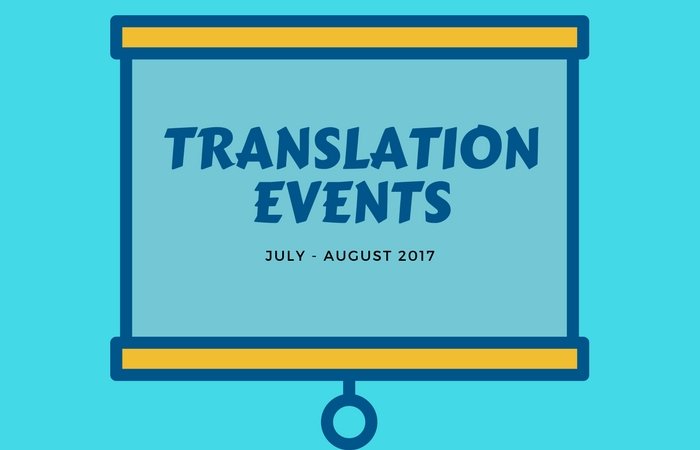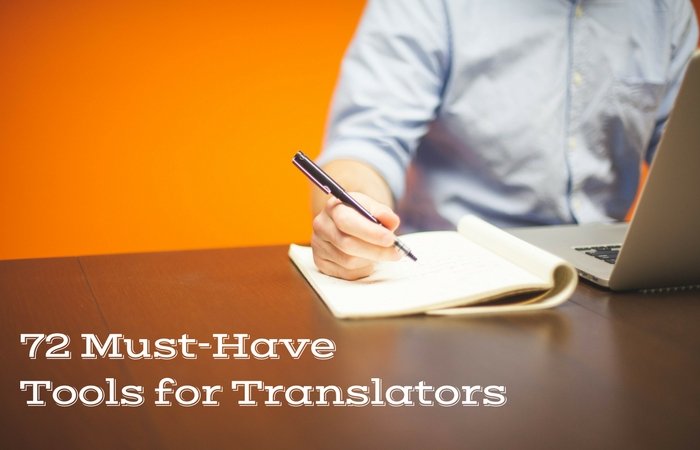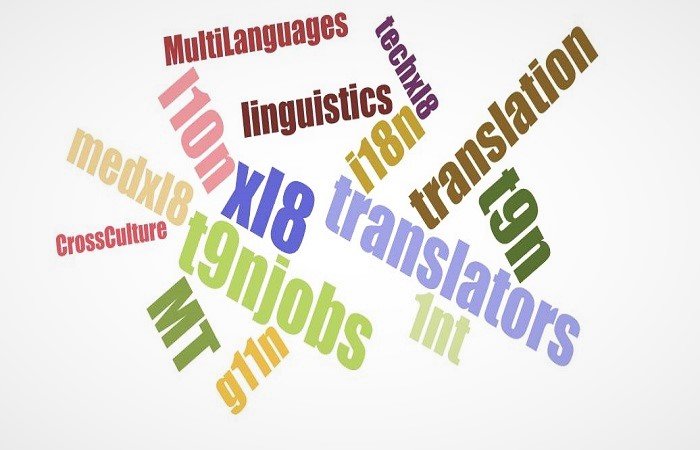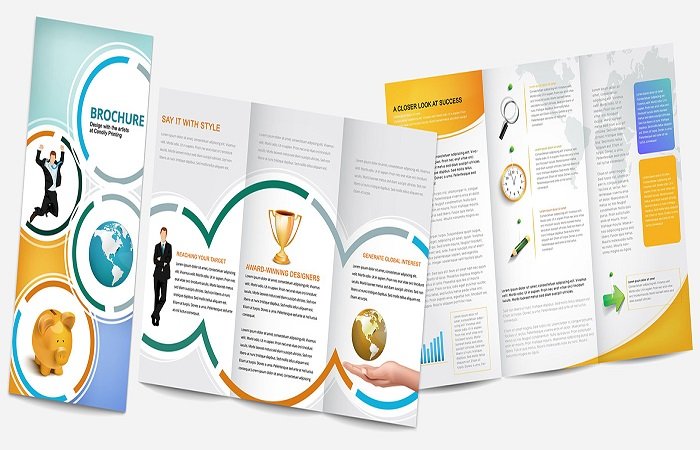When it comes to translating, having the right tools for the job can make all the difference. Whether you are a translator, a translation agency, or a freelancer these tools and apps will help you manage all your activities.
PROJECT MANAGEMENT / ORGANIZING / SCHEDULING / COLLABORATING
- Rulingo
English and Russian
Paid version
Cloud-based translation business management platform.
- Todoist
Multilingual
Free and paid versions
Manage tasks and projects anywhere with Todoist. At home. At school. At work. Online. Offline. And across 10+ platforms.
- Trello
Multilingual
Free and paid versions
Trello is a collaboration tool that organizes your projects into boards. In one glance, Trello tells you what’s being worked on, who’s working on what, and where something is in a process.
- Asana
English
Free and paid versions
Asana is a web and mobile application designed to help teams track their work.
- Quahill Basic
English, French, German
Free and paid versions
QuaHill Enterprise is translation management software for LSPs and teams of translators. The software enables complete administration of all processes ranging from the receipt of purchase orders, through preparing quotations, generating the project, preparing and recording purchase orders, ensuring access to files by vendors, delivery of translations to the client and invoicing.
- Portable Kanban
English
Free
Portable Kanban is a Personal Task Manager. This Portable Free Personal Electronic Kanban Software might be used to help schedule and track your daily events or tasks and to monitor assignment productivity.
- LSP Expert
English and French
Paid tool – 30 day free trial.
LSP.expert helps you manage your daily translation jobs. Features: track daily work, invoicing, reporting, client management.
- Remember the Milk
Multilingual
Free and paid versions
Remember The Milk is the popular to-do list that’s everywhere you are: from your phone, to the web, to your Google apps, and more.
- Podio
Multilingual
Paid version
Podio supplies a web-based platform for organizing team communication, business processes, data and content in project management workspaces.
- Doodle
Multilingual
Free and paid versions
Doodle radically simplifies the process of scheduling events, meetings, appointments, etc. Use Doodle to find the best time for any event. Suggest a number of times and invite participants to select their preferences.
- Insightly
English
Free and paid versions
Insightly is the easy, powerful and affordable online Customer Relationship & Project Management.
TERMINOLOGY/DICTIONARIES
- InterpretBank
Paid version
InterpretBank is an intuitive terminology tool for interpreters to create and manage multilingual glossaries.
- Glosbe
Free
Provides free dictionaries for almost every existing language and translation memory with 1 013 284 995 sentences included.
- IATE’s Chrome extension
Free
IATE (= “Inter-Active Terminology for Europe”) is the EU inter-institutional terminology database. IATE has been used in the EU institutions and agencies since summer 2004 for the collection, dissemination and shared management of EU-specific terminology.
- Termcoord
Free
Terminology Coordination Unit of the European Parliament. Resources, Traineeships, Glossaries, Articles about Terminology.
PDF VIEWER / CONVERTER
- SumatraPDF
Multilingual
Free
A free PDF, eBook (ePub, Mobi), XPS, DjVu, CHM, Comic Book (CBZ and CBR) reader for Windows. Includes screen shots, documentation and a support forum.
- Abby FineReader
Multilingual
Paid version
FineReader is an all-in-one OCR and PDF software application for increasing business productivity when working with documents. It provides powerful, yet easy-to-use tools to access and modify information locked in paper-based documents and PDFs.
SCREEN CAPTURE
- FastStone Capture
English
Free. For commercial use, license is required.
FastStone Capture is a powerful, lightweight, yet full-featured screen capture tool and screen video recorder. It allows you to easily capture and annotate anything on the screen including windows, objects, menus, full screen, rectangular / freehand / fixed regions as well as scrolling windows / web pages.
- Snipping tool
Multilingual
Free
A screenshot utility included in Windows Vista and later. It can take screenshots of an open window, rectangular areas, a free-form area, or the entire screen. Snips can then be annotated using a mouse or a tablet, stored as an image file (PNG, GIF, or JPEG file) or an MHTML file, or e-mailed.
- ScreenGrab
Language depends on your browser settings
Free
Add-on – Firefox (I am not sure if it is available in other browsers). Saves webpages as images
VOICE RECOGNITION
- Dragon Naturally Speaking
Languages supported: U.S. English, UK English, German, French, Italian, Spanish, Dutch, and Japanese.
Paid version
With Dragon Naturally Speaking Home, you can talk to your computer and watch your spoken words instantly appear in documents, email and instant messages.
ACCOUNTING / INVOICING
- Wave
Language: English
Free accounting software for small businesses.
- Zoho Books
Paid version
Zoho Books is an online accounting software to manage your invoices, bills, banking, inventory and do mobile accounting as well.
TRANSLATION SCAMS
- Payment Practices
Paid subscription
Dataset related to the payment practices of translation agencies and other consumers of translation services.
- Translator Scammers Directory
English
Free
Website maintained by volunteers from the TRANSLATOR SCAMMERS INTELLIGENCE GROUP to fight the plague of translators’ impersonation and identity and CV theft and fake translation companies running wild in the translation industry.
VARIOUS
- Lock Hunter
English
Free
It is a free tool to delete files blocked by something you do not know. LockHunter is useful for fighting against malware, and other programs that are blocking files without a reason. Unlike other similar tools it deletes files into the recycle bin so you may restore them if deleted by mistake.
- Search and Replace
English and Deutsch
Paid version
Search and replace utility used by programmers, webmasters, translators, and novice computer users. Search and Replace searches through one or more files files for a string and can also replace that ‘search hit’ with another string.
- Repetition Detector
Free trial
Repetition Detector 2 helps you detect repetitions in texts (while preserving your formatting), and much more: overused auxiliairies, adverbs, adjectives and complete phrases are also detectable. The software is available in English and French but works equally well with texts in Spanish, Portuguese, Italian, German, Dutch, Danish, Norwegian, Swedish, Finnish and Icelandic.
- Remove line breaks
English
Free
Have you received a document full of broken sentences? Remove line breaks with this tool!
IMPROVING CONCENTRATION
- Focus@Will
English
Paid version
focus@will combines neuroscience + music to boost productivity and tune out distractions.
WORDCOUNT
- Count Anything
English – It counts Asian characters
Free
Count Anything is a free word-count utility for Windows. It supports: Word (.doc, .rtf), Excel (.xls, .csv), PowerPoint (.ppt), Writer (.odt), Impress (.odp), Calc (.ods), HTML , XML, Text, PDF.
BACKUP
- Backblaze
English
Paid version
Robust, scalable low cost cloud backup and storage services. Personal online backup to enterprise scale data storage solutions.
PRINT TO PDF
- Bullzip PDF Printer
The Bullzip PDF Printer works as a Microsoft Windows printer and allows you to write PDF documents from virtually any Microsoft Windows application.
- Microsoft Print to PDF
Multilingual
Free
Microsoft Print to PDF feature is available in every application in Windows 10 that has printing capability.
TAKING BREAKS AND TIME MANAGEMENT
- Workrave
English
Free
A program that assists in the recovery and prevention of Repetitive Strain Injury (RSI). The program frequently alerts you to take micro-pauses, rest breaks and restricts you to your daily limit. The program runs on GNU/Linux and Microsoft Windows.
- Eyeleo
English
Free
EyeLeo is a handy PC application that regularly reminds you to take short breaks for your eyes.
CUSTOMER RELASHIONSHIP MANAGEMENT (CRM)
- Highrise
English
Paid version
Highrise makes running your business easy. Share tasks, notes, deals, email history, and more with our CRM Software for small business.
- Streak
English
Free and paid version
Manage customers directly inside Gmail. Useful for: sales , CRM, hiring, and support
- Yesware
English
Paid version
Yesware puts powerful sales tools inside your inbox, with email tracking, phone dialer, and sales automation.
DESIGNING
- Canva
Multilingual
Free and paid versions
Canva makes design simple for everyone. Create designs for Web or print: blog graphics, presentations, Facebook covers, flyers, posters, invitations
TIME MANAGEMENT – PRODUCTIVITY
- TomatoTimer
English
Free
TomatoTimer is a flexible and easy to use online Pomodoro Technique Timer
- Moosti
English
Free
Moosti is a simple time tracker with similar functions described on Pomodoro Technique.
- Fitbit App
Free
Multilingual
Use the Fitbit app and dashboard to track activity, record workouts, log food, connect with friends and family & more.
- RESCUE TIME
English
Free and paid versions
A personal analytics service that shows you how you spend your time and provides tools to help you be more productive.
UNIT CONVERSION
- ConvertAll
English
Free
ConvertAll is yet another unit converter. But it can combine the units any way you want.
EDITING/PROOFREADING
- Verifka
Multilingual
Paid
Verifika is a software tool that helps to locate and resolve formal errors in bilingual translation files and translation memories. It detects formatting, consistency, terminology, grammar and spelling errors in the target language.
- PerfectIt.
English
Paid
PerfectIt helps professional editors and translators to deliver error-free documents. It helps improve consistency, ensure quality and enforce your style guide.
- NaturalReader
English
Free and paid versions
NaturalReader is a text-to-speech app that reads webpages, documents, and eBooks aloud to you with quality, natural-sounding voices.
- Xbench
Free and paid versions
ApSIC Xbench provides simple and powerful Quality Assurance and Terminology Management in a single package. Just load files in any of the dozens of CAT formats supported and get your translation quality to the next level.
SOCIAL MEDIA
- Hootsuite
Multilingual
Free and paid versions
Save time by managing all of your social media marketing efforts from a single dashboard. With Hootsuite’s platform, you get the tools to manage all your social profiles and automatically find and schedule effective social content.
- Instapaper
Multilingual
Free
A simple tool for saving web pages to read later on your iPhone, iPad, Android, computer, or Kindle.
- Buffer
English
Free
Share to Twitter, Facebook, Google+, Instagram, Pinterest and LinkedIn – all from one place, on your schedule.
MAILING
- MailChimp
Multilingual
Free and paid versions
MailChimp provides email marketing for more than 15 million people globally. Send better emails, connect your e-commerce store, and sell more stuff.
FEEDBACK – SURVEYS
- SurveyMonkey
Multilingual
Free and paid versions
Create and publish online surveys in minutes, and view results graphically and in real time.
- Typeform
English
Free and paid versions
Build beautiful, engaging, and conversational online forms, surveys, quizzes, landing pages, and much more with Typeform.
INVOICING
- FreeAgent
Paid version
FreeAgent provides online accounting software made specifically for freelancers, small business owners and their accountants.
CLOUD STORAGE/FILE SHARING
- Dropbox
Multilingual
Free and paid versions
Dropbox is a free cloud storage service for sharing and storing files including photos, documents and videos.
- Google Drive
Multilingual
Free and paid versions
Get access to files anywhere through secure cloud storage and file backup for your photos, videos, files and more with Google Drive.
- OneDrive
Multilingual
Free and paid versions
OneDrive is pre-installed on Windows 10, and it works well on all your devices. Access and share files and photos on PC, Mac, Android and iOS.
ANTIVIRUS
- Advanced SystemCare Ultimate
English
Paid version
From IObit: Advanced SystemCare Ultimate 10 is a powerful and full-scale software for PC security and performance. It offers ultimate protection to Windows system in real-time against various security threats such as spyware, ransomware, DNS attacks, browser tracking, homepage modification and helps the users to block malicious online threats such as phishing websites and pop-up ads ensuring a secure and ads-free online surfing.
- CCLEANER
Free and paid versions
CCleaner automatically deletes unneeded files and Windows Registry entries. It can also detect duplicate files, securely wipe a storage device, and act as an alternative to Windows’ Programs and Features tool for uninstalling software.
MICROSOFT OFFICE ALTERNATIVES
- WPS OFFICE
English
Free and paid versions
Totally free office suite. Download the free office suite from wps official website. Compatible with .doc, .docx, .xls, .xlsx, .ppt, .pptx.
- Free Office
Multilingual
Free
FreeOffice is a complete office suite with a word processor, a spreadsheet application and a presentation program – all compatible with their counterparts in Microsoft Office.
- Google Docs
Multilingual
Free
Google Docs, Google Sheets and Google Slides are a word processor, a spreadsheet and a presentation program respectively, all part of a free, web-based software office suite offered by Google within its Google Drive service.
TRANSLATION SOFTWARE – CAT
- Olifant
Free
English
Olifant is a .NET application that allows you to load or import translation memories in different formats (such as TMX or tab-delimited). You can edit the translation units, their attributes and any other associated data. Olifant allows you to save or export your data in various formats.
- smartCAT
Multilingual
Free and paid versions
smartCAT is a cloud-based environment enabling the translation workflow of companies (including translation companies) and individual translators.
- MateCAT
English
Free and paid versions
MateCat is a free and open source translation tool. Companies, translation agencies, freelance translators and any other users can use it for free with no limitations on the number of projects and users.
- SDL Trados Studio
Multilingual
Paid version
SDL Trados Studio is a CAT tool and translation memory software that provides features to help translate faster and more easily.
- Wordfast
Multilingual
Paid version
Wordfast is the world’s leading provider of platform-independent translation memory software. Wordfast offers powerful desktop, server, and web-based solutions designed to meet the needs of freelance translators, translation agencies, multinational organizations, and educational institutions worldwide.
- MemoQ
Multilingual
Paid version
memoQ translator pro is a computer-assisted translation tool which runs on Microsoft Windows and on Mac using Parallels or VMWareFusion. It was envisioned more than 12 years ago by a group of enthusiastic linguists who aimed to develop innovative translation software which increases translator’s productivity while being easy to learn and use.
- Memsource
Multilingual
Free and paid versions
Memsource Cloud is a complete translation platform that includes translation memory, integrated machine and human translation, terminology management, and a web-based as well as a desktop translator’s editor.
SUBTITLE EDITOR
- Subtitle Edit
Subtitle Edit is a free editor for video subtitles – a subtitle editor. With SE you can easily adjust a subtitle if it is out of sync with the video and much more.












